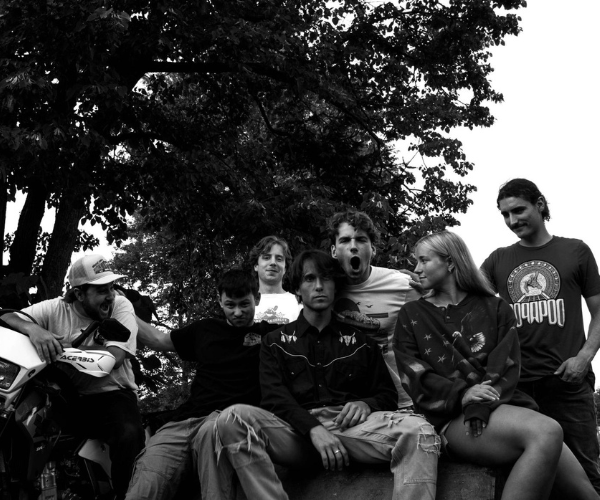At age 17, artist Jamie Davis wasn’t sure how much time she had left.
Diagnosed with osteosarcoma, a common type of bone cancer, she underwent treatments, and her perspective on life completely changed.
“I can’t say if it was the illness that changed me or just me growing up, but that time period has influenced the way I look at everything,” she says.
Now 28, the Akron-based artist has a solo exhibition at the Museum of Contemporary Art (MOCA) Cleveland that focuses on this time of her life, and how she’s grown since. She’s been cancer free for 10 years, but its effects are still regularly on her mind.
Davis’ early works incorporate pieces of herself — literally — into her art, such as her hair and blood. “As I’ve matured, I’ve stepped away from that to make it more universal,” she says. “Certainly, when I was using blood and hair, there was an immediate disgust. Sometimes it crossed the line to where it got nothing but sympathy, and I’m not looking for pity artwork or to make people feel something they aren’t feeling. I am using more neutral materials that don’t evoke such guttural reactions.”
For example, in a large piece titled “Anamnesis,” clouds made of disks represent every day of her life. During the year she had cancer, the cloud is dark and ominous.
Each cloud since has some shade of gray or black, but less and less.
Of course, the piece can be appreciated on the literal level, says MOCA exhibition curator Indra Lacis. But there is a collective appeal, too. “For viewers, it might summon our own feelings of what a dark spot in our own lives means,” Lacis says.
The other large piece in the show, “Cede/Seed,” also focuses on time. Small wax disks, each marked with an hour stamp, reflect every hour Davis had cancer. The art is interactive, allowing those attending the show to take a disk home with them.
“Time is the most valuable thing to me,” Davis says. “So taking my time and giving it to someone is an act of love. It’s really important and really big. Sharing something you can’t give back is really interesting to me.”
The piece will evolve throughout the summer. Based on past museum atttendance, Davis says she anticipates about 4,000 people to take a piece, which will alter the way the work looks. She hopes people will look for times and dates that mean something special to them.
“It started with the idea of what time meant to me and what it meant to other people,” she says. “Not everyone has the same association with the same dates.”
Diagnosed with osteosarcoma, a common type of bone cancer, she underwent treatments, and her perspective on life completely changed.
“I can’t say if it was the illness that changed me or just me growing up, but that time period has influenced the way I look at everything,” she says.
Now 28, the Akron-based artist has a solo exhibition at the Museum of Contemporary Art (MOCA) Cleveland that focuses on this time of her life, and how she’s grown since. She’s been cancer free for 10 years, but its effects are still regularly on her mind.
Davis’ early works incorporate pieces of herself — literally — into her art, such as her hair and blood. “As I’ve matured, I’ve stepped away from that to make it more universal,” she says. “Certainly, when I was using blood and hair, there was an immediate disgust. Sometimes it crossed the line to where it got nothing but sympathy, and I’m not looking for pity artwork or to make people feel something they aren’t feeling. I am using more neutral materials that don’t evoke such guttural reactions.”
For example, in a large piece titled “Anamnesis,” clouds made of disks represent every day of her life. During the year she had cancer, the cloud is dark and ominous.
Each cloud since has some shade of gray or black, but less and less.
Of course, the piece can be appreciated on the literal level, says MOCA exhibition curator Indra Lacis. But there is a collective appeal, too. “For viewers, it might summon our own feelings of what a dark spot in our own lives means,” Lacis says.
The other large piece in the show, “Cede/Seed,” also focuses on time. Small wax disks, each marked with an hour stamp, reflect every hour Davis had cancer. The art is interactive, allowing those attending the show to take a disk home with them.
“Time is the most valuable thing to me,” Davis says. “So taking my time and giving it to someone is an act of love. It’s really important and really big. Sharing something you can’t give back is really interesting to me.”
The piece will evolve throughout the summer. Based on past museum atttendance, Davis says she anticipates about 4,000 people to take a piece, which will alter the way the work looks. She hopes people will look for times and dates that mean something special to them.
“It started with the idea of what time meant to me and what it meant to other people,” she says. “Not everyone has the same association with the same dates.”
Jamie Davis is on display at the Museum of Contemporary Art (MOCA) Cleveland May 30 through Sept. 7 and is included in the regular museum admission fee. For more information, call (216) 421-8671 or visit www.mocacleveland.org.



